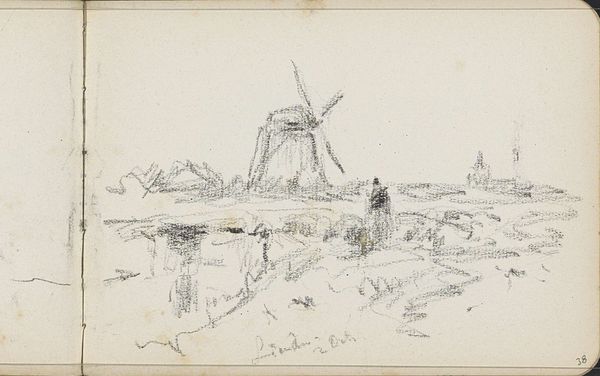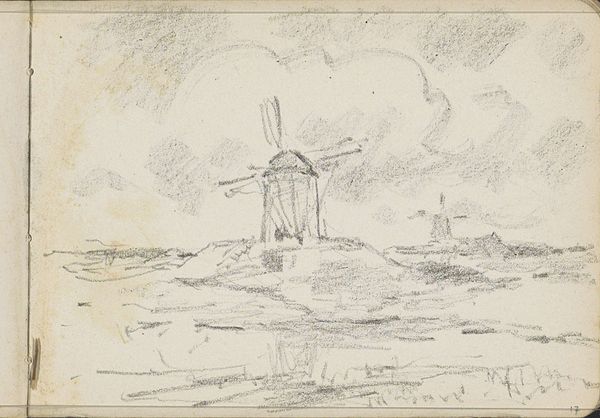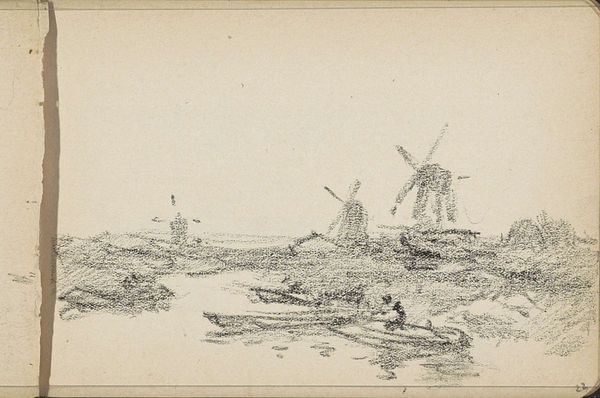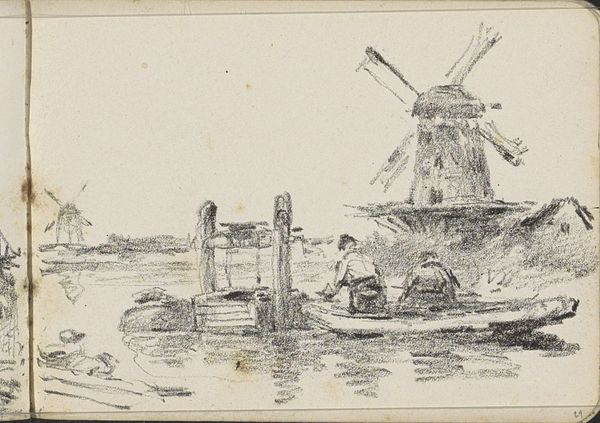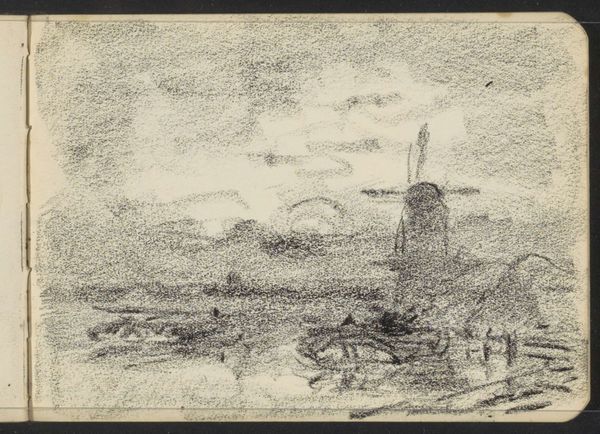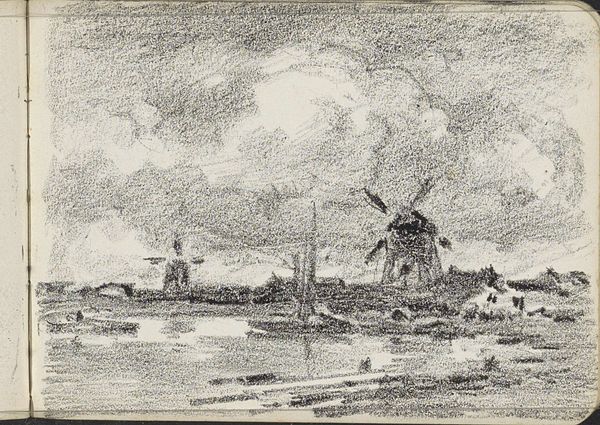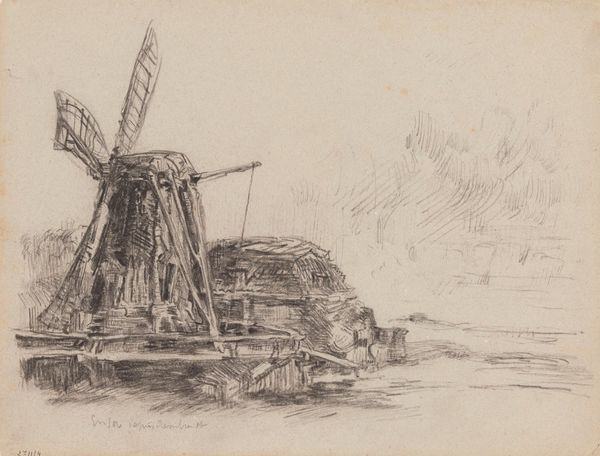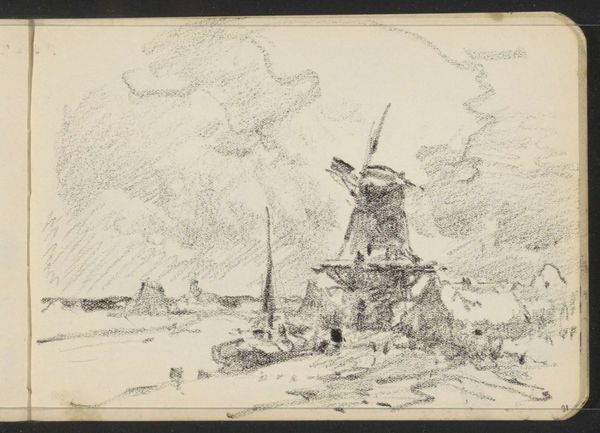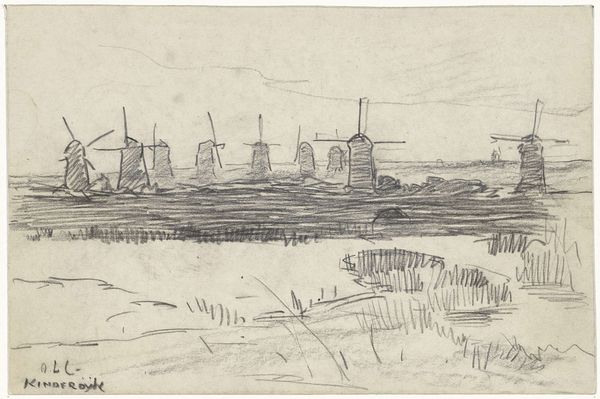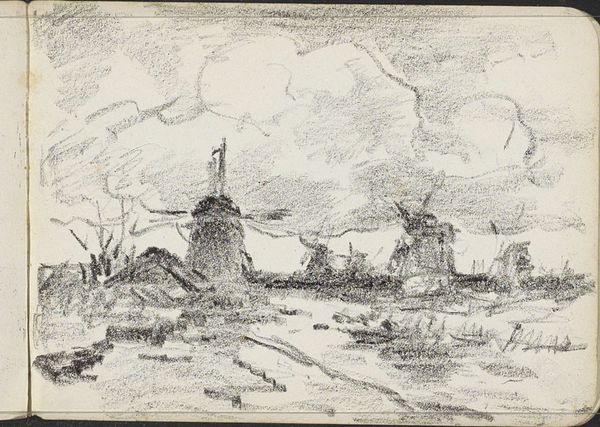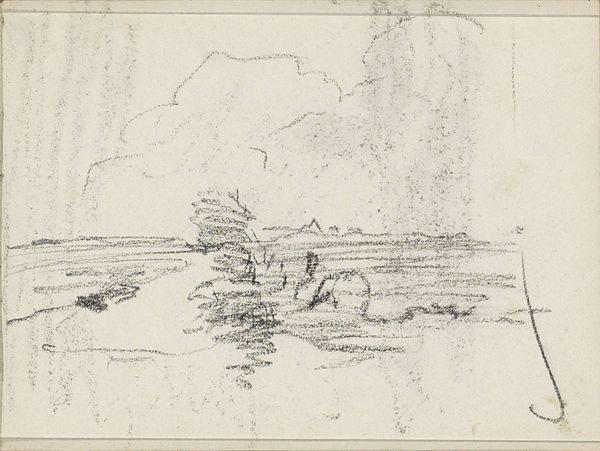
drawing, pencil
#
drawing
#
landscape
#
pencil
#
realism
Copyright: Rijks Museum: Open Domain
Editor: This drawing, "Rivierlandschap met molens," by Willem Cornelis Rip, dates from around 1919 to 1921. It's a pencil drawing, very evocative… almost ghostly with the muted greys. What strikes you when you look at this work? Curator: It's compelling to consider the humble nature of the materials themselves, isn't it? Pencil on paper. Think of the paper mill, the graphite mines. And then consider what’s being depicted – windmills, traditionally vital for drainage and grain production. Editor: So, you see a relationship between the medium and the subject matter? Curator: Precisely! We often separate art from the everyday, but here, Rip uses a simple, readily available tool to capture the machinery that shaped the very landscape he's drawing. The work itself embodies that fusion of labor and landscape. It shows us the infrastructure that underpinned Dutch society. Think of the labor involved in maintaining those windmills. Editor: That’s an interesting perspective, viewing it in terms of the labor it represents, both in its creation and its subject. I initially focused more on the aesthetic quality. Curator: But aren’t those intertwined? The choice of pencil, its inherent limitations, contributes to that "ghostly" feel you mentioned, perhaps hinting at the fading relevance of these windmills in an increasingly industrialized world. What kind of social impact are we able to gather from the means of art? Editor: I never really considered it like that before, but I see your point about the link between materials, labor, and social context. It provides a fresh perspective on the piece. Curator: Exactly. The piece helps demonstrate the historical links between means and methods of production.
Comments
No comments
Be the first to comment and join the conversation on the ultimate creative platform.
